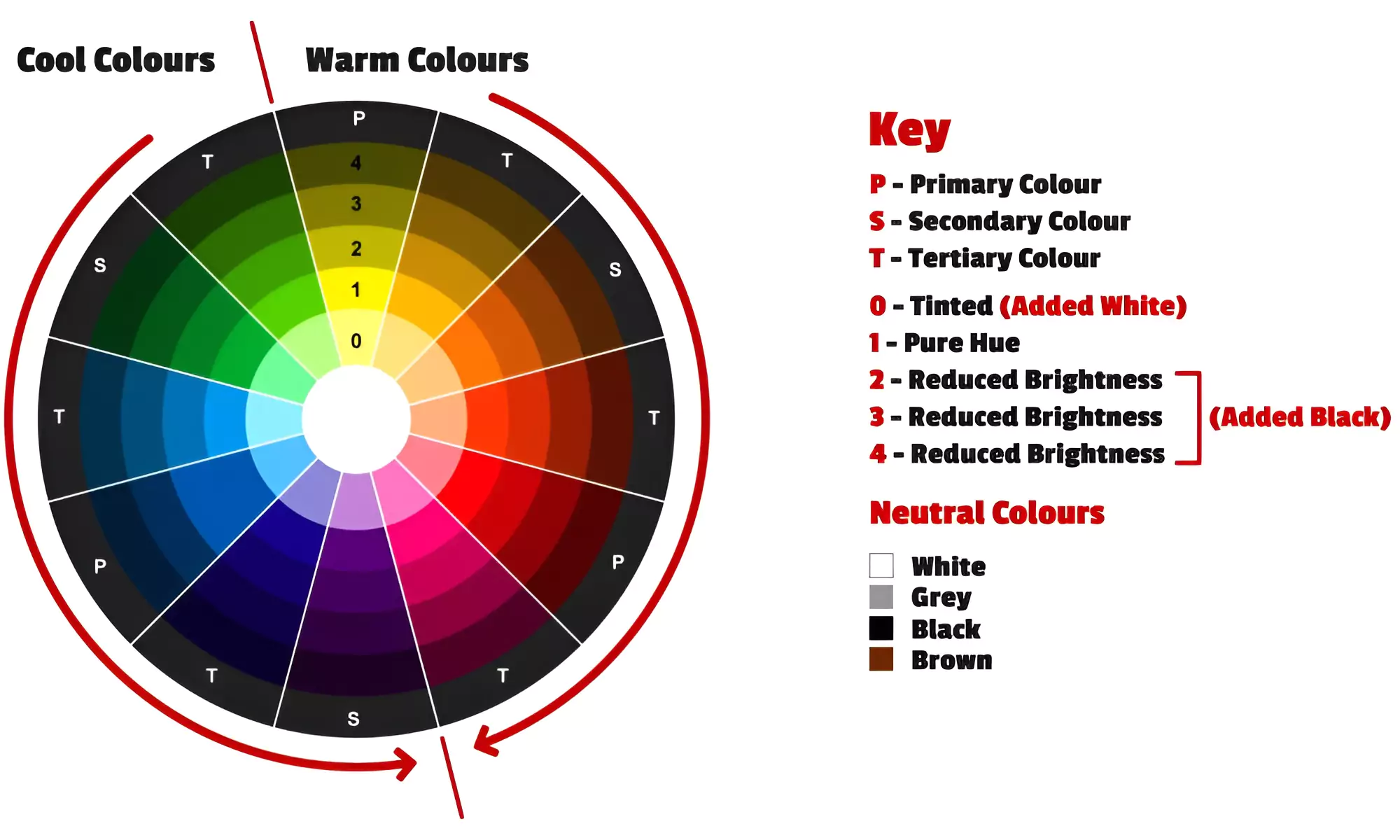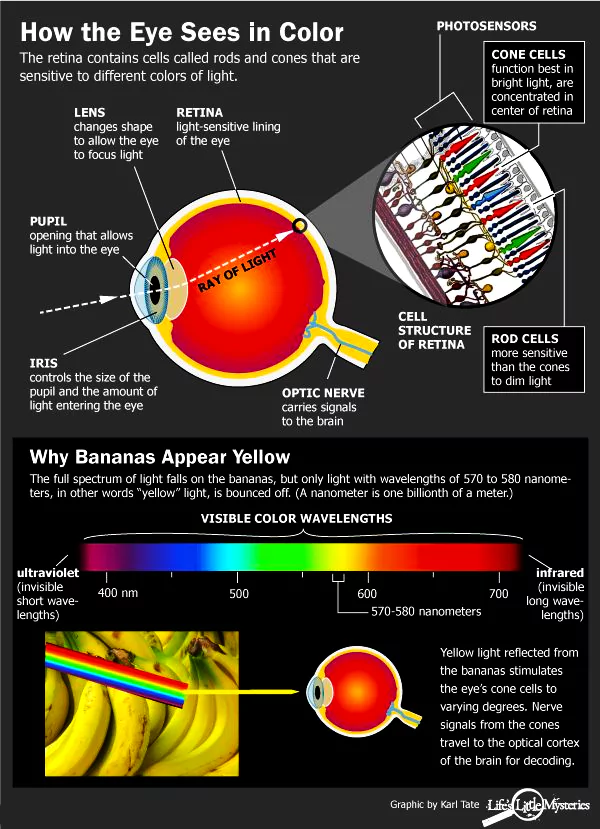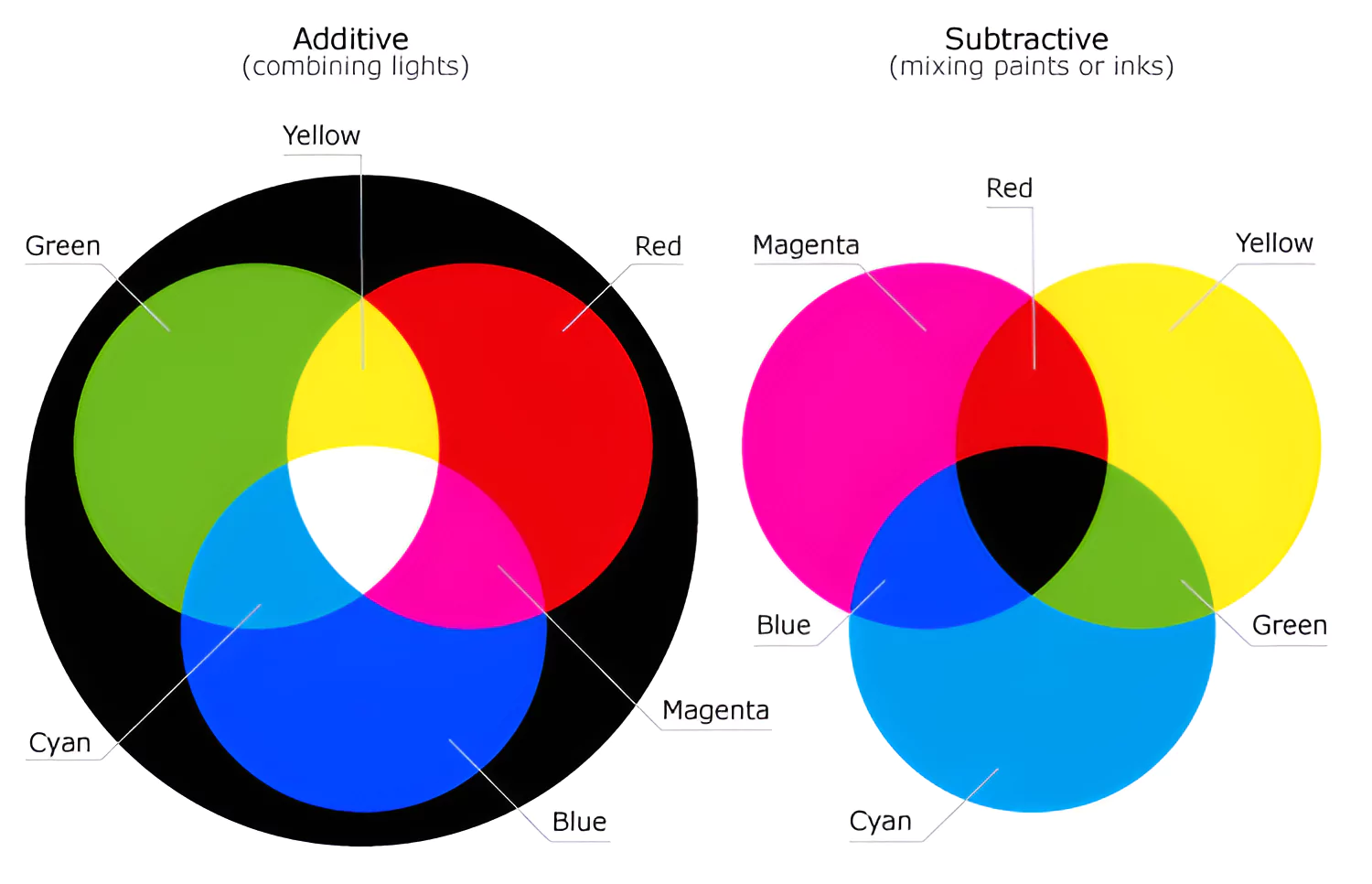Context
This article sheds light on colour and its significance in understanding how living beings perceive the world.
- Red, green and blue are primary colors.
- Yellow, magenta and cyan are secondary colors.
What is Colour?

Colour is a type of information our eyes receive and process based on electromagnetic radiation.
- Absorption, Reflection, and Scattering: An object doesn’t inherently have a colour.
- When light hits an object, it interacts with the object’s surface.
- Then, it absorbs, reflects, and/or scatters different frequencies of visible-light radiation.
- Our perception of color arises from these interactions.
Enroll now for UPSC Online Course
Properties of Colour:
- Hue : It is defined as the degree to which a color is perceived as similar to or different from red, orange, yellow, green, blue, or violet.
- Chromaticity: It relates to the quality of a color as perceived by humans, regardless of lighting conditions.
- Lightness: It refers to how light a coloured object appears compared to a well-lit white object.
- Brightness : It is related to an object’s luminance.
|
How Human Eyes Process Colour?

- Rod and Cone cells: The human eye contains rod and cone cells that process light information.
- Rod cells detect brightness.
- Cone cells detect wavelengths, which the brain interprets as color.
- Humans have three types of cone cells, each sensitive to different wavelengths.
- It allows us to see a range of colors.
- Trichromats: This ability to see three wavelengths is why humans are called trichromats.
Vision in Other Species
- Tetrachromats: Many birds and reptiles are tetrachromats, meaning they have four types of cone cells.
- Visible wavelengths: Humans can see wavelengths from 400 nm to 700 nm, known as visible light.
- Ultraviolet light: Some animals, like honeybees, can see ultraviolet light.
- Infrared radiation: Mosquitoes and some beetles can sense infrared radiation, which humans feel as heat.
Limitations and Enhancements in Viewing Celestial Images
- Visible spectrum:Human vision limitations mean we can’t see beyond visible light.
- False colors: Space telescope images often use false colors to highlight information in radio waves, X-rays, gamma rays, and ultraviolet light.
- Without these enhancements, celestial images would show much less detail in visible light alone.
Methods of Rendering Colors
- Additive Coloring
- In additive coloring, different wavelengths of light are combined to create a new color.
- This method is used in devices like smartphone screens and televisions.
- The RGB color space is a common example:
- Red, green, and blue light are mixed in varying amounts to produce other colors.
- Subtractive Coloring
- Subtractive coloring involves passing white light through a medium that absorbs certain wavelengths, leaving the rest to create a specific color.
- Examples: dyes, pigments, and inks.
Enroll now for UPSC Online Classes

Examples of Colour’s Influence
- Prehistoric Use of Ochre
- Humans used ochre in ancient times.
- Mixture for Ochre: The formation of ochre involves mixing ferric oxide, clay, and sand correctly.
- Development of Blue LEDs
- Red and green LEDs existed in the 1970s, but no blue.
- Without blue, white light (ideal for homes and industry) couldn’t be made.
![]() 28 May 2024
28 May 2024



